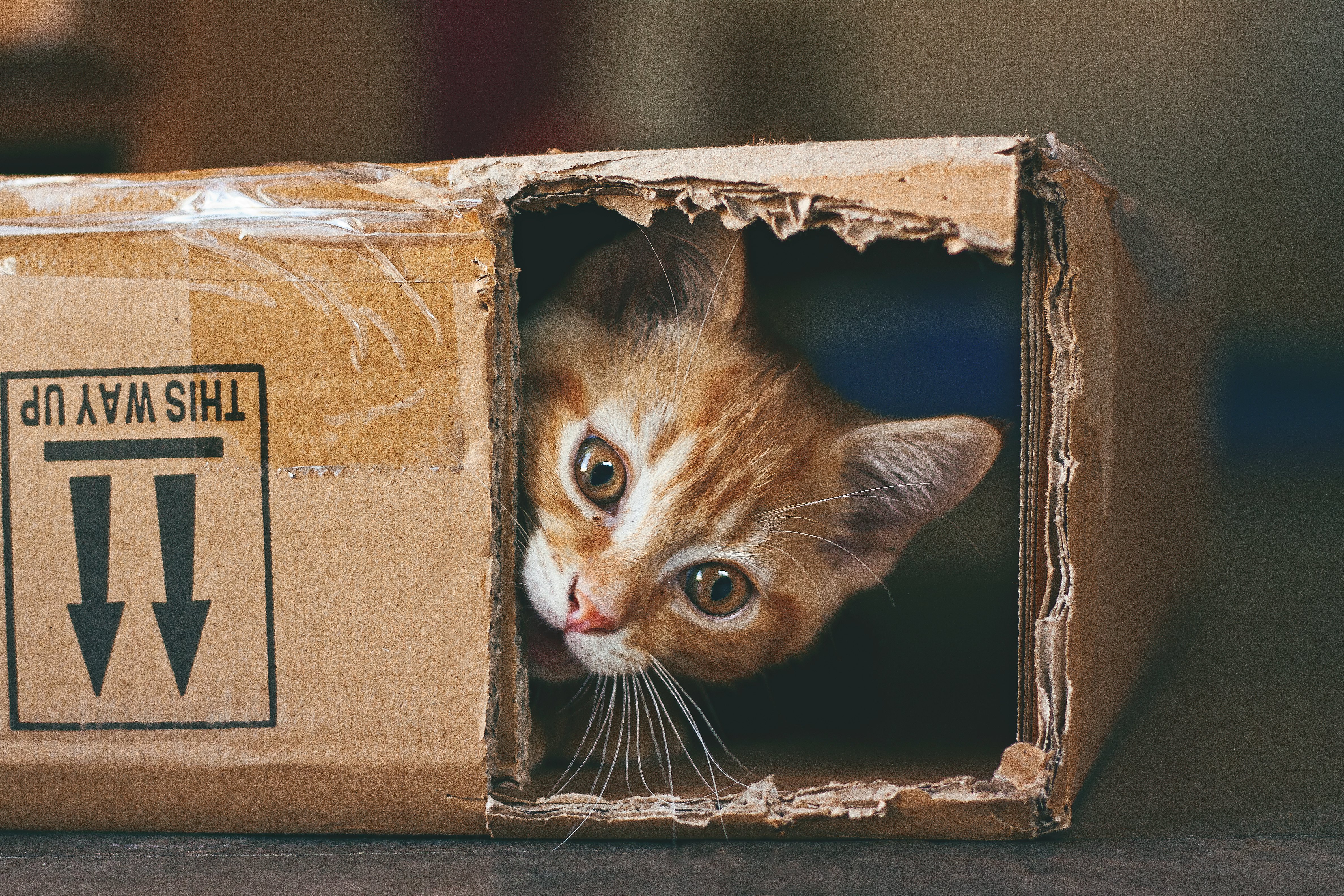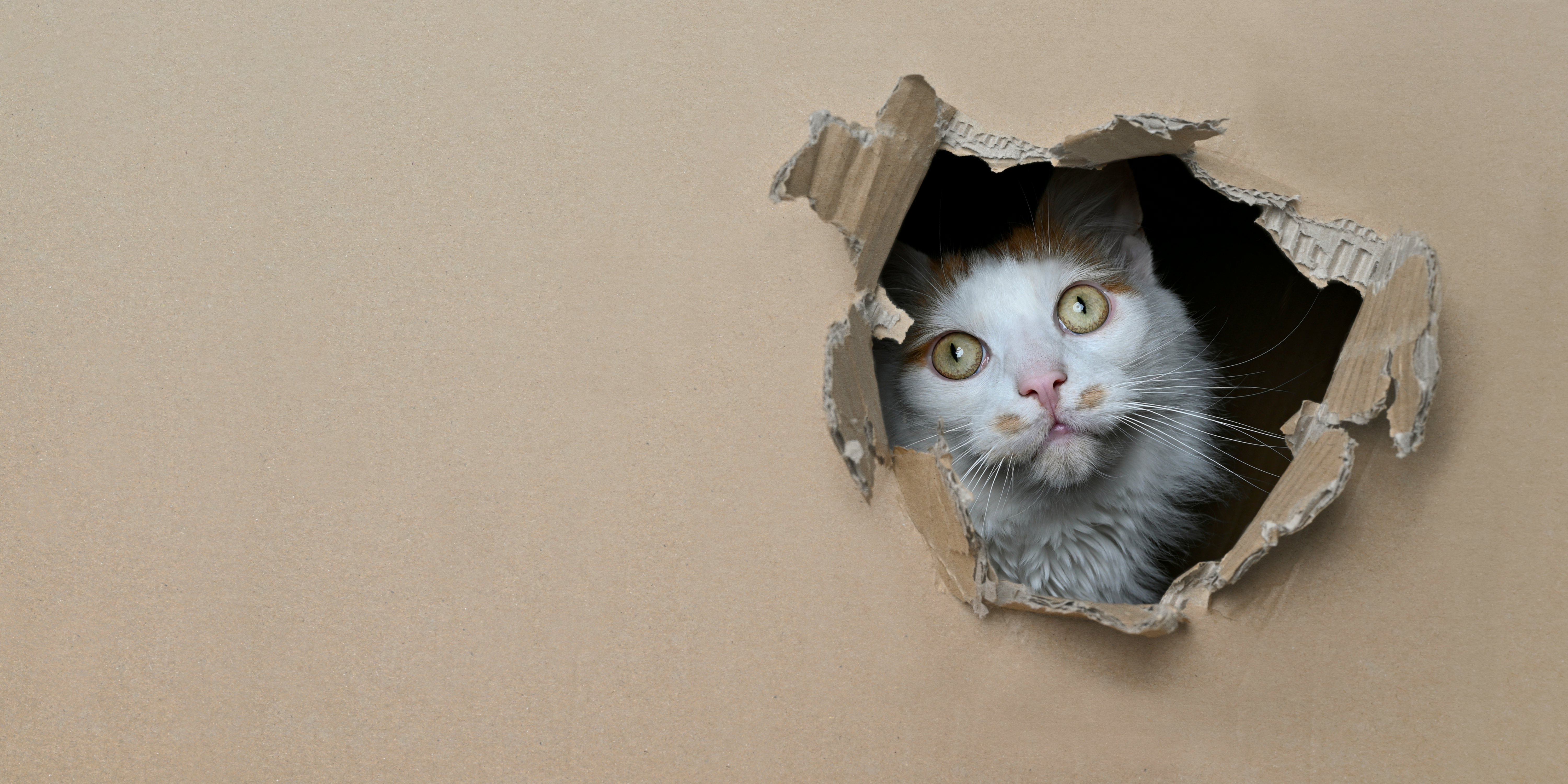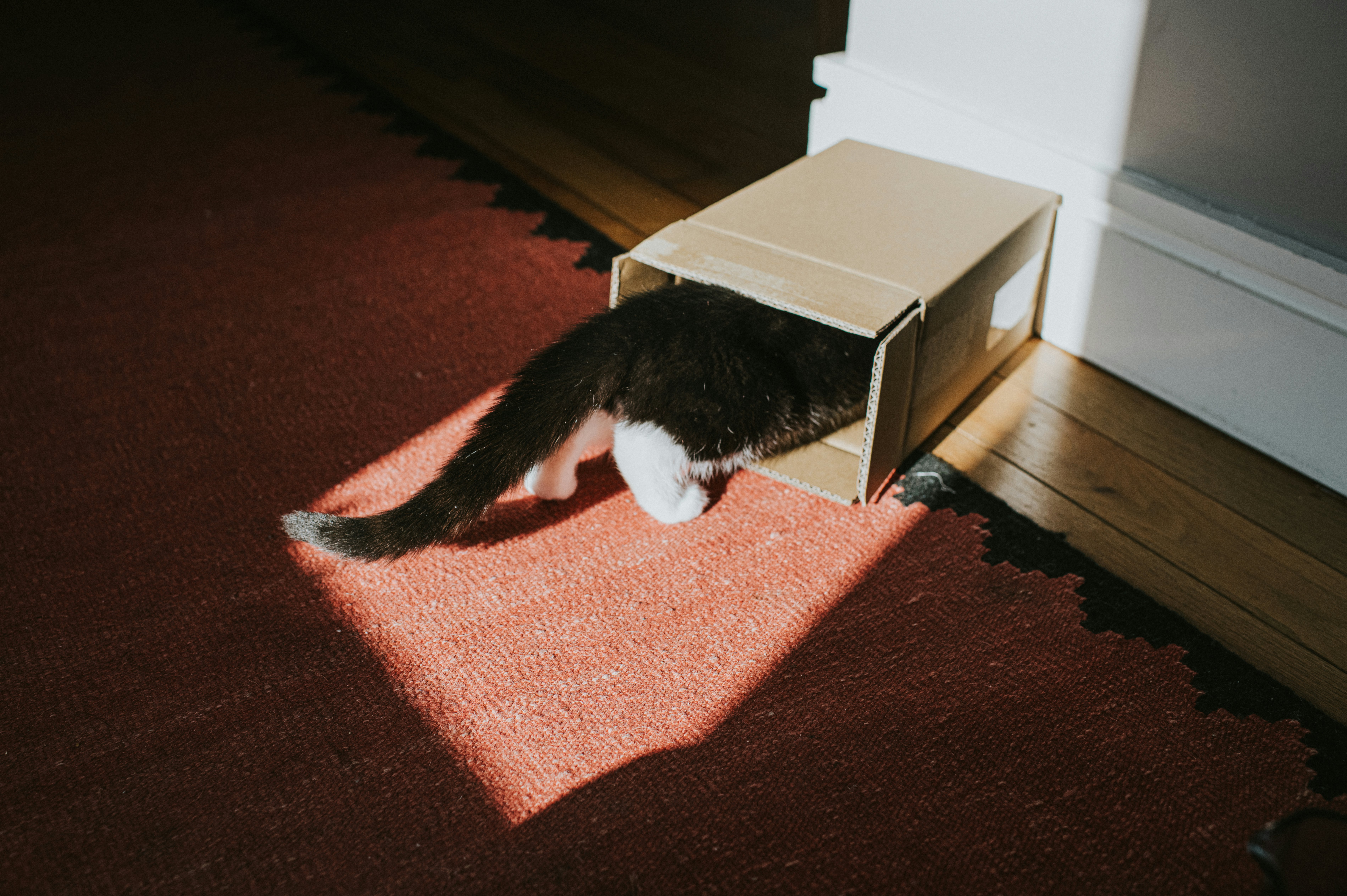
Cats are no strangers to cardboard boxes, as any feline owner knows well. But what is it about these flimsy square crates that make our kitties go wild?
While we can’t say for certain, pet experts and feline scientists have begun making inroads into the mysteries of the cat’s mind in recent years.
“If your cat has become attached to a cardboard box, why deny them that pleasure?” Molly DeVoss, a certified feline training specialist who runs the nonprofit Cat Behavior Solutions, tells Inverse.
Why does my cat like sitting in cardboard boxes?

Cats may be drawn to cardboard boxes for many reasons, but one common explanation is the novelty factor. Cardboard boxes may contain smells or an interesting texture to rub up against.
“Cats are very sensitive to changes in their home, and many cats like to investigate anything different,” Mikel Delgado tells Inverse. Delgado is a cat expert at Feline Minds.
There’s also a more complex evolutionary reason why cardboard boxes are like catnip for your pet: They provide a sense of security from predators and a good vantage point to stalk potential prey — or dangling toys in the modern world.
“Cats are both predators and prey species. Hiding in something like a cardboard box can shield them from being detected by their prey until they are ready to pounce,” Katherine Pankratz, a board-certified veterinary behaviorist, tells Inverse.
“Chewing on cardboard may simply be because it’s fun and entertaining”
Chyrle Bonk, a veterinarian at PetKeen, tells Inverse that cats like the small, confined nature of boxes, which “helps them feel safe from predators or other scary things in their environment.”
DeVoss says that cats may remember toys you previously tossed in empty boxes, so any new box serves as an invitation to play.
“I also wonder if the cat is attempting to scent the box by laying in it and rubbing on it; cats are more comfortable when everything in their environment smells like them,” DeVoss adds.
Cardboard boxes are also insulating, so cats may find them particularly useful in keeping themselves warm.
Surprisingly, there is some scientific data on cats and boxes. One 2014 study observes what happens when you give shelter cats boxes for hiding. According to the data, cats that received the boxes were less stressed than those without, confirming that “hiding boxes” provide some sense of stress reduction in new environments.
A more recent paper looked into the cat’s obsession with the enclosed, square shape of objects like cardboard boxes, laundry baskets, and simple outlines on the floor. The researchers confirmed the cats have “illusory contour susceptibility,” which means they perceive contours that do not exist in reality. In the experiments, cats sat on a square-shaped illusion, known as a Kanizsa square, just as often as a real square.
While the study confirms that cats are, on some evolutionary level, attracted to sitting in boxes, it doesn’t propose to explain why that behavior occurs.
“My study simply harnessed cats' attraction to sitting in enclosed spaces and did not really illuminate why they do it,” Gabriella E. Smith, currently a Ph.D. Candidate of Comparative Cognition at Messerli Research Institute, tells Inverse.
Why does my cat chew on cardboard boxes?

Some cats go beyond sitting in the box and also chew or eat the box. There could be a number of reasons why your cat is chomping on the cardboard.
Cats may have a compulsive tendency to chew on inedible objects — a phenomenon known as “pica.” Pankratz says pica is concerning when it comes to boxes because cardboard could be dangerous if consumed in “significant amounts.”
DeVoss says pica is “relatively uncommon” but adds that eating cardboard boxes could be a warning sign that you should speak with your veterinarian.
But there’s also a simpler explanation: Your pet just loves the corrugated texture on the edge of the boxes. The texture is soft and may be easier for cats to puncture than other objects, giving them easy satisfaction for both chewing and clawing.
“Chewing on cardboard may simply be because it’s fun and entertaining,” Bonk says, though she adds that it could also be a way for cats to relieve sore gums due to dental disease, so it may be time to give your kitty a dental checkup.
DeVoss says your pet may also be chewing cardboard as part of “attention seeking” behavior — in other words, to get you to pay attention to them.
Other factors include boredom and stress. Delgado suggests speaking with a veterinarian if you suspect environmental factors could be stressing out your pet.
Finally, if you notice your cat chewing on the flaps or sides of the box, DeVoss says it could be your pet’s way of scent marking the box since saliva carries pheromones. Once you’ve identified why your cat is chewing on the cardboard box, you can work to find solutions.
“Set your cat up to succeed by keeping cardboard boxes securely away to avoid your cat’s temptation and find an alternative means to meet that need,” Pankratz says.
Delgado recommends providing your cat with other activities to keep them busy and objects to chew on, which may include:
- Bird feeders to watch near a window
- Objects to climb and scratch
- Food puzzles
- Cat grass
- Chew toys
- Dental kibble
How can I get my cat to stop playing with the box?

At some point, you’re probably going to want to recycle the box so it doesn’t clutter your home. So what can you do if your cat becomes unusually attached to the trash object?
“If you need to throw away a box that your kitty has become attached to, start by first putting other objects in the box,” Bonk says.
Pankratz agrees, adding that you should provide alternative options and let your cat “vote” based on which object it spends the most time enjoying.
These objects could include a soft blanket, a toy, some catnip, a towel that smells like the cat, or a bed that your pet finds comforting. After your pet has adjusted to the new object, try moving it to a place outside of the box that is similarly enclosed, so your cat feels secure. If you feel confident your cat is okay, then you can dispose of the box.
But if your cat is staying hidden in the box because it’s frightened of something, Pankratz says “addressing the reason for their fear” would be better than trying to take them out of the box.
Other experts like Delgado say it might be harder than you think to entice your cat to sit elsewhere. Instead, you can try offering your cat multiple boxes at once. That way, as your pet explores and becomes familiar with a new box, you can recycle the old one. Many cats like having multiple sleeping options, which they’ll rotate out depending on the movement of the sun and time of year.
“If they love cardboard the best, then why not let them enjoy it?” Delgado asks.
De Voss agrees: “I leave boxes out for as long as my cat seems interested in them.”







